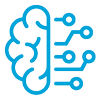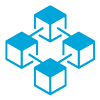INTRODUCTION
Tomorrow is coming…sooner than you think.
There is a sea change underway in the retirement industry. As many as five different generations are now participating in retirement plans. New technologies are emerging to engage participants and streamline back-office operations. All the while, the regulatory environment continues to shift with new and proposed rules.
Amidst dramatic change lies unprecedented opportunity. For example, some of the proposed regulations on Multiple Employer Plans (MEPs) may provide access for smaller employers. New technologies, like cloud computing and Software as a Service (SaaS), drive new efficiencies at a lower cost, with much faster implementation.
| KEY TRENDS IMPACTING THE RETIREMENT INDUSTRY TODAY AND STRATEGIES TO HELP FIRMS THRIVE: |
| 1. Decoding the investor mindset |
| 2. Strategies for closing the savings gap |
| 3. How legislative and regulatory changes mean new risk and opportunity |
| 4. How new technologies and tools are helping retirement providers gain a competitive edge |
“Retirement 2020. Here before you know it.”
NEW SURVEY RESULTS: DECODING THE INVESTOR MINDSET
The character of today’s investor is changing. Most Millennials are now well into adulthood, Boomers are retiring later and Gen-Zers are already graduating college and entering the workforce. At the same time, the rapidly accelerating migration to digital communication is creating tremendous opportunity for employees and the providers who serve them.
To help our clients take advantage of unfolding opportunity, Broadridge commissioned a new study to measure investor perceptions and attitudes related to wealth management, investing and retirement. In partnership with The Center for Generational Kinetics (CGK), our team surveyed 1,003 U.S. respondents, aged 22 to 59. We asked questions designed to reveal how different groups save for retirement, and how investment expectations shape behavior.
THERE’S A SERIOUS EDUCATION GAP
One of the most surprising findings in our research is that investors are more likely to seek financial advice from friends or family, rather than a professional advisor.
This lack of financial education partly explains why only 58% of Millennials are confident in a workplace retirement plan (compared to 72% of Boomers). Across our research, Millennials expressed investment preferences that run counter to conventional advice. For instance, Millennials say they’re equally confident investing in a private business as they are the global stock market. Many prefer traditional low-yield savings accounts instead of employer-sponsored plans.
Since investors don’t always seek professional advice, many aren’t aware of—nor do they know how to evaluate—available investment options. For example, more than 40% of investors don’t have any familiarity with Health Savings Accounts (HSA) and their triple-tax advantage. Only 30% make regular contributions to an HSA. Of those, 65% say they use their HSA money for current health care needs, while only 8% save for the future.
IS BEHAVIORAL FINANCE THE ANSWER?
In the last few years, there’s been a trend in the industry toward leveraging insights from the behavioral sciences to boost outcomes for participants. Among other things, research demonstrates that decisions are often based on intuition, people don’t always defer gratification and too many choices can generate decision paralysis.
The goal is to find ways to minimize poor decision making. To that end, auto-enrollment, auto-escalation and increased default contribution rates are gaining prominence. Such methods appear to work. A recent study by Vanguard showed only 8% of workers opted out of default contributions. And, across the industry, default savings rates are nearing 4%.
In addition to defaults, robo-advising and other algorithm-based technologies can help investors make smarter decisions. Some recordkeepers are evaluating innovations with artificial intelligence platforms that intervene when participants try to reduce contributions. Chatbots initiate educational dialogues that aim to dissuade participants and can capture motivations for later follow-up by an advisor. As these technologies gain sophistication, it may make sense to invest in artificial intelligence (AI) solutions to complement human interactions.
THE SAVINGS GAP EXISTS. BUT WHY?
There is a retirement savings gap in the United States, estimated at $8 trillion. It spans every generation and demographic. Americans plainly aren’t saving as much as they should. Although the story is well known, the various causes aren’t always clear.
The question isn’t academic. Providers can’t motivate investors unless they decode the unique preferences and expectations that animate behavior. To gain a competitive advantage, it’s more important than ever to understand why employees aren’t saving and what motivates plan participation.
RESPONDENTS SAY THERE’S NO MONEY TO SAVE
The rising cost of living combined with stagnant wages means that, for many Americans, day-to-day expenses outpace earnings. Most employees recognize they don’t save as much as they should, but they say there’s simply not enough money leftover at the end of the month.
It’s no surprise that debt is first on the list. Consumer debt is at an all-time high and will surpass $4 trillion in the near future. Student loan debt is also a serious problem, with Millennials especially feeling the crunch.
REVERBERATIONS FROM THE FINANCIAL CRISIS CONTINUE
The financial crash in 2008 hit investors hard, both psychologically and financially. Our survey reveals that a significant number of investors now distrust Wall Street and have an inflated view of market risk.
Even after a record bull run that recaptured market losses, it’s clear the crash is still fresh in investors’ minds.
In practical terms, massive layoffs during the Great Recession reduced overall contributions, and unemployed investors missed out on some recovery gains. A similar trend indicates significant plan leakage during the same period. By 2017, 30% of workers had taken loans or early withdrawals from their 401(k) or IRA. Many have been unable to fully recover.
MIND THE SAVINGS GAP: THREE STRATEGIES FOR SUCCESS
- Provide holistic, goal-oriented financial planning and advice.
Encouraging participants to exercise better financial habits to improve overall financial health can go a long way to boosting participation and contributions.
- Deliver personalized, differentiated communications.
There’s a big difference between a Boomer playing catch-up and a Millennial with student debt. Make sure your messaging is directly responsive to the unique needs of investors at different stages on the journey toward a stable retirement.
- Educate. Educate. Educate.
The savings gap is tied to the education gap. Retirement providers must find ways to help investors learn about, understand and evaluate tax-advantaged retirement and HSA savings plans offered at the workplace.
LEGISLATIVE AND REGULATORY CHANGES MEAN NEW RISK AND OPPORTUNITY
In the past year, proposed legislation has appeared in Congress that seeks to boost efficiency in the retirement industry and help close the savings gap. Although ongoing gridlock has so far stalled progress, a recent Executive Order created new momentum. In September 2018, President Trump instructed the Department of Labor to review regulations with an eye toward modernizing the industry and making it easier for small businesses to access retirement plans.
We believe most of the proposed regulatory changes reflect a formalization of trends already taking shape across the industry. Below are the two key trends we believe will have the most significant impact.
THE RISE OF MULTIPLE EMPLOYER PLANS
Multiple Employer Plans (MEPs) were created in the early 20th century and pre-date the Employee Retirement Income Security Act (ERISA) and tax laws, as well as the relatively modern advent of the 401(k). Today, the relatively small number of MEPs in existence are typically used to unify a single plan around related companies with common ownership that do not meet the rules of “common control.” Another prominent use case is the aggregation of similar companies in a similar industry, often arranged by an association.
“An estimated 42 million Americans work for small businesses that do not currently offer an employer-sponsored retirement plan.”
The key benefit of MEP arrangements is that it enables firms that do not meet the definition of “common control” to consolidate assets with a unified plan and trust, so that members may pool their buying power and achieve economies of scale.
Certain rules, however, have held back the proliferation of MEPs. One of the top impediments to widespread adoption is the “one bad apple” rule. New legislative efforts to eliminate these obstacles can create a way for small employers to minimize financial and administrative hurdles to offer employees a means to save for retirement.
THE “ONE BAD APPLE” RULE TREASURY REG. §1.413-2(A)(3)(IV)
“The qualification of a section 413(c) plan…is determined with respect to all employers maintaining the section 413(c) plan. Consequently, the failure by one employer maintaining the plan (or by the plan itself) to satisfy an applicable qualification requirement will result in the disqualification of the section 413(c) plan for all employers maintaining the plan.”
MEPs are poised to open enormous opportunity for the retirement industry. But new, untapped markets may not be good news for all: Advisors and other financial professionals who currently service small businesses risk potential disintermediation as Multipe Employer Plans become industry standard.
DEFAULT TO DIGITAL
We’re in a digital-first world, but the retirement industry still relies on too many analog-first practices. Paper-based communication has been industry standard since the passage of ERISA in 1974. Policymakers believe we can modernize the industry by allowing plan sponsors to make electronic delivery the default method for participant communication.
According to the SPARK Institute, digital default could generate as much as $500 million in aggregate savings annually. Lower expenses for providers mean potentially higher returns for plan participants. In addition, digital default has the potential to boost overall participation by facilitating a more consumer-friendly onboarding and participant-journey experience. Regardless of the pace of formal regulatory change, the industry will need to be ready. Investor preferences overwhelmingly favor digital communications.
OVERCOMING THE SQUEEZE
NEW TECHNOLOGIES AND TOOLS ARE HELPING RETIREMENT PROVIDERS GAIN A COMPETITIVE EDGE
Consumer demands continue to elevate expectations in the retirement industry. Driven by Apple, Amazon, Uber and Netflix, consumers want a seamless digital experience that is intuitive and convenient. While investors expect more, retirement providers are constantly challenged to do more with less. Building new experiences, integrating legacy systems, sourcing the data and managing content can be a huge challenge for plan administrators. Managing hundreds of plan documents and sending personalized communications at scale is never easy. At the same time, fee compression combined with tighter operating budgets is making it harder than ever to gain a competitive edge.
The good news is that emerging innovations in technology, new workflow tools and SaaS solutions are helping recordkeepers, TPAs and plan administrators streamline operations and lower costs. New technologies and approaches now enable retirement providers to deliver high-touch communications at scale.
CONNECTING WALL STREET TO MAIN STREET AND MAIN STREET TO WALL STREET
New platforms, like Broadridge’s everyIRA, leverage the best new technologies to help providers quickly increase IRA assets while reducing IRA service costs. Via the platform, retirement providers can seamlessly transfer their services to individual retirement accounts of all sizes. For the first time ever, IRA accounts of any type or size can gain unmatched flexibilty and ease of use in investment selection, advice and education.
TRANSFORMING RETIREMENT COMMUNICATIONS
To lay the foundation for success in 2020, it’s necessary to build a highly-efficient, repeatable system that can deliver personalized communications at marginal cost. Below, we discuss how innovations in data management, customized content creation and omni-channel communications are enabling plan providers to deliver personalized plan communications that scale.
THE DATA DIFFERENCE
The biggest hurdle to creating highly personalized experiences is poor data quality coming from multiple different systems. To work effectively, retirement providers need actionable data in a consistent format. But with data coming from so many different sources (e.g. employers, participants, third parties), it’s extremely difficult to ensure you’re working with accurate, up-to-date data.
New technologies and process innovations facilitate data aggregation, normalization and standardization. But that’s only the beginning. How do you sync, reconcile and protect myriad data inputs, while also ensuring that you adhere to ownership agreements and other contractual obligations? It’s not enough to scrub and clean data. At the same time, you need a data governance framework organized according to the guidelines and rules developed for specific communications and or processes.
Better data governance and management procedures empower you to implement more personalized communications at scale, and enable you to perform deep analytics to identify what works. Today, ROI is the name of the game. Engagement metrics combined with participant success metrics can pinpoint which strategies are most successful.
TACKLING FEE COMPRESSION WITH AUTOMATED BILLING AND EXPENSE MANAGEMENT
Retirement providers feel it and the data confirms it: In the last decade, the asset-weighted average expense ratio for DC plans fell 16 basis points, from .57% to .41%. The authors of the study say the downward trend is likely to continue.
Fee compression has hit recordkeeping services especially hard. Among other things, increased fee disclosure and a heightened fiduciary focus remain the principal drivers. Compounding problems, plan sponsors and fiduciaries are changing the ways they pay for recordkeeping services. Revenue sharing subsidies continue to decline and we’re also seeing a movement away from asset-based toward per-participant pricing.
Given fee compression across the industry, retirement providers are seeking ways to streamline back-office operations to prevent fee leakage. Many are looking to automated billing and expense management. Eliminating manual processes can minimize errors and help recapture fees. Plus, automation enables recordkeepers to focus human resources on mission-critical activities.
CUSTOMIZED CONTENT
One of the most important trends in the last few years is the movement toward highly personalized communications. Relevant communications that speak to unique plan and participant needs are proven to boost participation and maximize contributions.
Leading providers know the value of meticulously mapping the client experience and the participant journey. It’s all made possible through advanced data analytics, targeting and segmentation. In very broad strokes, the retirement journey is linear and traces a predictable path. It begins with onboarding, followed by occasional nudges to save more and maximize the employer match. At other points, participants are encouraged to diversify and reallocate investments. But individual journeys are always more complex than a standardized roadmap might suggest. That’s why it’s more important than ever to deliver personalized content responsive to the specific needs, goals and objectives of each participant.
New innovations make it easier and cheaper to deliver personalized campaigns at scale. Data-driven content creation platforms facilitate workflow automation. And cloud-based tools enable multiple compositors to collaborate from anywhere. With improved data management, it’s possible to organize and efficiently execute discrete campaigns, targeted to every stage of the participant journey.
THE ABCD’S OF RETIREMENT TECHNOLOGY

Artificial Intelligence
Machine learning and robotic process automation are helping everyone work smarter.

Blockchain
Distributed ledger technology is driving new process efficiencies in securities trading and maximizing transparency across recordkeeping functions.

Cloud
Work-from-anywhere technology continues to expand. 73% of organizations say nearly all their applications will be on SaaS platforms by 2020.

Digital
Digitalization is not just about efficiency and cost savings; it’s the essential ingredient for long-term growth.
OMNI-CHANNEL DISTRIBUTION
Although digital default is not yet standard, leading retirement providers are continually making significant investments. Importantly, the transition to digital default will not mean paper-based communications are abandoned altogether. Best practices suggest an omni-channel approach that can deliver complementary analog-digital experiences. As much as digital technologies boost convenience and accessibility, phone calls, in-person meetings and physical booklets can also make an impact.
The key is finding ways to consolidate physical and digital workstreams. Too many retirement providers find they have one distinct process for paper mailings and another distinct process for digital communications. Along with significant inefficiency, distinct workflows duplicate and multiply costs, further squeezing already tight margins.
New technologies and tools make it easier to combine workflows to deliver a true omni-channel experience. Too often, campaigns are targeted to drive a specific response or action at a specific moment in time. Full digital enrollment is obviously an advantage, but what happens next? Instead of focusing on discrete campaigns, it’s all about comprehensive experience management. Data-driven distribution cadence helps alleviate message fatigue, and engagement metrics help providers gain insight into the next best action. Smart, ongoing engagement drives better outcomes across the participant journey.
Gone are the days when retirement providers can simply mail traditional quarterly statements to participants. The plan participant is increasingly in control, looking for on-demand access to the information they want, via the channel they prefer. With new innovations in data, content and delivery, you can not only meet, but exceed participant expectations at every step.
POWERING RETIREMENT. EMPOWERING YOU.
SOLUTIONS THAT DRIVE THE RETIREMENT INDUSTRY FORWARD
How do you drive business transformation when technologies, regulations and markets are constantly in flux? At Broadridge, we have solutions to drive the retirement industry forward. Our approach is based on three core principles:
INNOVATE
Best-in-class technologies and data-driven innovations give you the tools to turn disruptive trends into new opportunities.
ACCELERATE
Expedite the path toward retirement readiness. Achieve faster implementations and onboarding while delivering world-class services.
IMPACT
Drive transformative business value with easily scalable solutions that empower you to deliver for your clients and maximize ROI.
View the full list of references for this white paper.